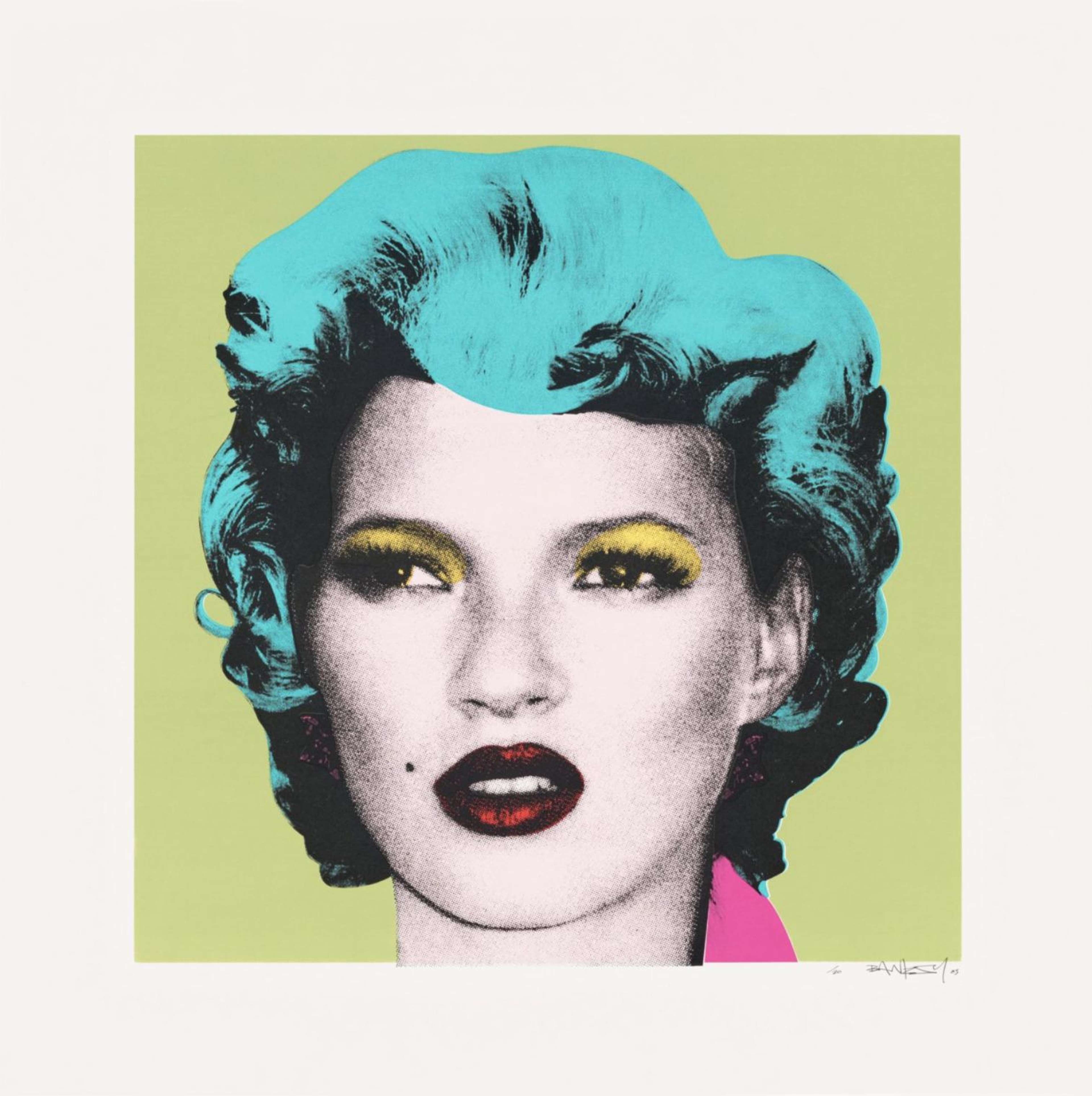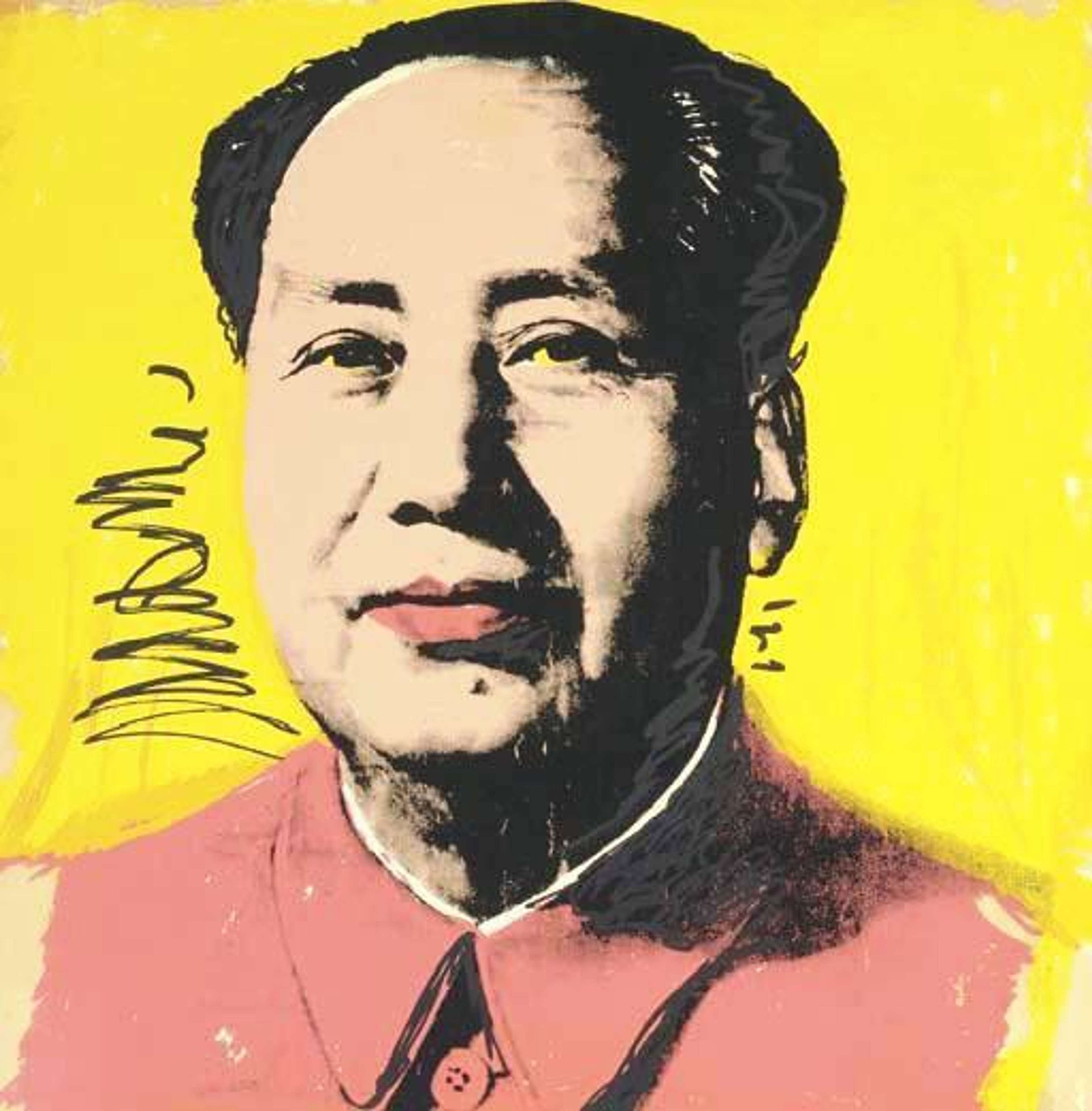 Self Portrait © Andy Warhol 1966
Self Portrait © Andy Warhol 1966
Interested in buying or selling
Andy Warhol?

Andy Warhol
487 works
When it comes to choosing Andy Warhol’s most famous artworks, deciding on just 5 is a tough task.
Throughout his lengthy career, which spanned the 50s, 60s, 70s, and 80s, the king of Pop Art produced countless artworks that would change the course of art history forever.
From his iconic Soup Cans through to an epoch-defining self-portrait, made in the year before his death, in this article we take a closer look at Andy Warhol’s top 5 most famous artworks.
To learn more about the value of Warhol's print market today, read our 2023 American Pop Print Report here.
Campbell's Soup Cans (1961-2)
One of Andy Warhol’s first ever artworks to achieve international acclaim, the subject matter here is simple: the humble Campbell’s Soup can.
The Campbell's Soup series — comprised of 32 individual canvases, each dedicated to a different flavour offered by the company — is essentially responsible for catapulting Warhol, and the Pop Art movement he founded, to stardom. Soup flavours depicted included tomato, cheddar cheese, beef, clam chowder, pepper pot, and oyster stew.
Why the soup can? As the story goes, Warhol chose to make a series of works centred around the humble Campbell’s soup can because of its strength as an all-American ‘brand,’ — branding being an essential component of Warhol's œuvre.
The artist explored branding in many other works, namely his Green Coca-Cola Bottles (1962) and Brillo Boxes (1964), as well as in his later collaborations with Jean-Michel Basquiat. These works saw Warhol reappropriate the logos of US corporations Arm And Hammer and General Electric.
Part of the iconography of capitalism, consumerism, and the American working class, the soup can is also a nod to Warhol’s humble upbringing in Pittsburgh - once the centre of the US steel industry.
 Campbell's Soup 1, Chicken Noodle (F & S 11.45) © Andy Warhol 1971
Campbell's Soup 1, Chicken Noodle (F & S 11.45) © Andy Warhol 1971Marilyn Monroe (1964)
Warhol’s Marilyn Monroe-inspired works first began just after the tragic death of the actress in August of 1962.
Made using silkscreen printing — one of 7 techniques that would go on to define Warhol’s career — these first images are amongst some of the most recognisable in the world.
Much like other examples of Warhol’s work, such as his 1985 Ads series, these prints reference the artist’s long held obsession with the iconographies of Western consumerism.
Capitalising on Monroe’s iconic face - she was one of the world’s most famous actresses at the time - these bright, effervescent prints are a paean to both fame and fortune, and the youthful energy of an actress who died tragically young. The source image for the series is a publicity photo taken to advertise Monroe’s 1953 film Niagara.
Described as the visual epitome of the ‘American Dream’, the Marilyn image was later incorporated into one full-size work entitled The Marilyn Diptych (1962). This closely resembles Warhol’s Elvis paintings, produced in the following year.
By 1964, Warhol returned to the Marilyn Monroe motif for the Shot Marilyns series. This consists of four canvases, each complete with Warhol’s rendition of the screen star.
However, the Shot Marilyns were a little bit different: each canvas was shot with a single bullet by performance artist Dorothy Podber.
In May 2022, one of the Shot Marilyn works, Shot Sage Blue Marilyn, sold for US$195 million (£158 million) at Christie’s New York, making it the most expensive piece of 20th-century art ever sold and a record price for the artist.
Banana (1966)
Another instantly recognisable work from Warhol’s œuvre, Banana (1966) became world-famous as the cover image for The Velvet Underground’s seminal experimental rock album, The Velvet Underground & Nico (1967).
Early releases of the album featured a ‘peel and stick’’ version of the banana, which when removed revealed a bright pink, unpeeled banana below.
Warhol, then the owner and creative genius behind Manhattan’s art studio-come-nightclub The Factory, was instrumental in marketing The Velvet Underground, which comprised singers Lou Reed and Nico, Welsh instrumentalist John Cale, guitarist Sterling Morrison and drummer Moe Tucker.
They performed at Exploding Plastic Inevitable (EPI), a series of events organised by Warhol in 1966-7 that featured screenings of his films, as well as musical and dance performances. But, despite its legendary status today, initially the album performed poorly commercially.
Describing the impact of The Velvet Underground & Nico, artist and musician Brian Eno famously once said: ‘The first Velvet Underground album only sold 10,000 copies. But everyone who bought it formed a band’.
Going hand-in-hand with the Velvet Underground’s ground-breaking, experimental approach to music making, today Warhol’s Banana is synonymous with New York’s thriving cultural scene during the late 1960s.
Mao (1972)
Produced following the iconic Flower series, the Mao series marks Warhol’s return to portraiture, and is one of his most famous.
Product of Warhol’s intense interest in fame, the series is inspired by both Richard Nixon’s historical 1972 visit to China, and an article that appeared in Life magazine in the same year. This opinion piece asserted that Chinese Communist leader Mao Zedong was the ‘most famous’ person on earth at the time.
A meditation on politics, reproducibility and the image, Warhol decided to base his series on a photograph from Mao’s Little Red Book - a bound collection of essays and aphorisms attributed to the leader, which was distributed throughout China during the bloody Cultural Revolution of the 1960s and 70s. To date, more than a billion copies of the ‘book’ have been produced.
In Warhol’s version, Mao’s ‘traced’ portrait is ‘filled in’ with a variety of bright colours, ranging from green and orange to blue and yellow.
At the heart of these works is technology. In the late 1960s, Warhol was introduced to the Photostat machine whilst visiting New York’s School of Visual Arts. This was a career-changing moment for Warhol, allowing him to make on-the-spot photographic prints of images that he could then use as the foundations for his brightly-coloured Pop creations.
By 1973, the first colour Xerox machine — better known as the photocopier — was released on general sale. Warhol quickly bought one and used it to make hundreds of copies of his traced image. Mechanical reproduction of artworks was now as simple as pressing a button.
The Mao series was unveiled at Warhol’s landmark exhibition at The Musée Galliera in Paris in 1974. The walls of the exhibition space were pasted with repeated Mao motifs, which Warhol called ‘Mao wallpaper’.
[For our article on where to see Warhol’s most famous works, click here.]
Self Portrait (Fright Wig) (1986)
By no means the first of Warhol’s self-portraits, Self-Portrait (Fright Wig) (1986) is another of Warhol’s most well-known artworks.
Produced in the year preceding his death, the piece features its appearance-obsessed creator's trademark platinum wig — or his ‘Fright Wig’, as he called it.
Gazing deeply into the viewer’s eyes, Warhol draws our attention to both his withered face and shock of white hair in what is ultimately an expression of defiance; behind his determined look is a desire to exude youthful energy and decadence in spite of old age, ill health, and waning fame.
Rich with a sense of Warhol’s awareness of mortality, the work bears resemblance to his earlier Skulls series: a memento mori for the contemporary age, many have described the work as a ghostly harbinger of death — and enduring fame.
Browse our Andy Warhol prints for sale or get a valuation here.
 Image ⓒ trevor.patt / Self Portrait (Fright Wig) ⓒ Andy Warhol 1986
Image ⓒ trevor.patt / Self Portrait (Fright Wig) ⓒ Andy Warhol 1986






